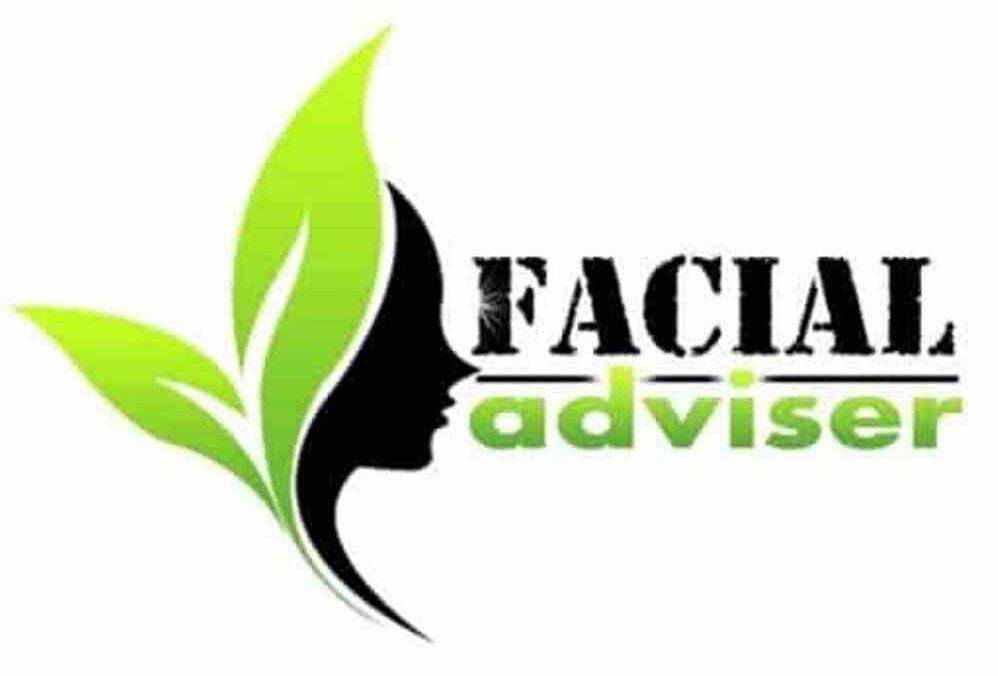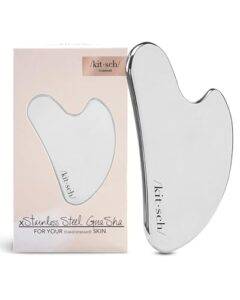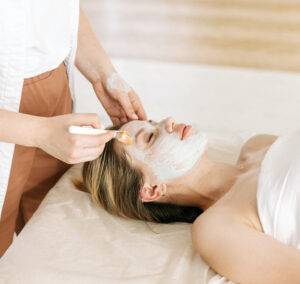This Site Is A Participant In The Amazon Services LLC Associates Program. We may earn money or products from Amazon or the companies mentioned in this post.
Cleansing removes dirt and impurities from the skin, while a facial involves multiple steps such as cleansing, exfoliation, and moisturizing to improve skin texture and appearance. Facials can also address specific skin concerns such as acne or aging.
Skin care routines vary widely, but among the most basic steps are cleansing and facials. These skincare methods are fundamentally different. Cleansing is the process of removing surface-level dirt, oil, and pollutants from the skin. Facial, on the other hand, takes things one step further.
A facial is a multi-step treatment that typically include cleansing, exfoliation, steam, extraction, and massage, all of which serve the purpose of rejuvenating and nourishing the skin. Facials vary depending on skin type and concerns but are capable of unclogging pores, removing dead skin, and treating acne. On the whole, facials are more thorough and targeted, whereas cleansing is usually a basic first step.

Credit: www.differencebetween.net
Understanding Cleansing And Its Benefits
Cleansing and facial are two terms often used interchangeably in the beauty industry, but in reality, they are different processes. Cleansing is an essential and often the first step in any skincare routine. If done correctly, it can help to clear away dirt and impurities, giving your skin a healthy and radiant glow.
In contrast, a facial is a more intensive and holistic skincare treatment that can involve cleansing, exfoliation, and moisturization. We will delve into the differences between cleansing and facial treatments under the subheading:
Defining Cleansing: What It Is And Why It’S Important
Cleansing is an essential part of any skincare routine as it helps to remove dirt, grime, sweat, and excess oil from our skin. If left unattended, these impurities can accumulate on the skin’s surface, giving rise to breakouts, blackheads, and other skin issues.
Cleansing helps to unclog pores and remove dead skin cells that can lead to dullness and uneven skin texture. Some important points to consider about cleansing are:
- Cleansing helps in prepping your skin for other skincare products, such as serums and moisturizers.
- It allows moisturizers and serums to penetrate into the skin better.
- A gentle cleanser is a must for all skin types, including sensitive skin.
- Over-cleansing can also be harmful to your skin, resulting in dryness, irritation, and inflammation.
The Benefits Of Proper Cleansing
Proper cleansing can bring a host of benefits to your skin. Here are some points to consider:
- Helps in preventing acne and breakouts.
- Gets rid of the excess oil on your skin’s surface, reducing the chances of clogged pores.
- Keeps the skin hydrated by allowing better absorption of your moisturizers and serums.
- Helps in maintaining younger-looking skin by promoting collagen production.
- Helps in reducing inflammation and irritation.
The Most Effective Cleansing Techniques
Effective cleansing techniques can vary based on your skin type and preferences, but here are some tips to achieve a healthy glow:
- Choose the right cleanser for your skin type. For oily skin, choose a gel-based cleanser, while dry skin will benefit more from moisturizing cream or lotion cleansers.
- Always cleanse your face twice a day – once in the morning and once at night.
- Use lukewarm water to wash your face. Hot water can be harsh on the skin, while cold water does not open up the pores as much as lukewarm water does.
- Massage the cleanser into your skin in a circular motion, avoiding any eye area.
- Remove the cleanser using a gentle, damp cloth or water splash instead of harshly rubbing it off
Cleansing is the first important step in keeping your skin healthy and radiant. By following the most effective cleansing techniques, you will not only improve the look of your skin but also allow it to better absorb products. Remember, healthy skin begins with clean skin.
The Fundamentals Of A Facial
Facials have become increasingly popular in recent years as people strive for flawless and healthy skin. But what exactly happens during a facial, how does it work to improve skin health and appearance, and what types of facials are available today?
Let’s take a deep dive into the fundamentals of a facial.
What Happens During A Facial?
A facial typically lasts between 30 minutes to an hour and is performed by a licensed esthetician or skincare professional. The steps of a facial may differ depending on the type of facial, but generally, the following steps occur:
- Consultation: The esthetician will ask questions about the client’s skin condition, concerns, and routine, and may also examine the skin under magnification to determine the appropriate products and techniques to use.
- Cleansing: The esthetician will cleanse the skin, sometimes using steam and warm towels to help open pores.
- Analysis: The esthetician may examine the skin for issues such as blackheads, whiteheads, and dehydration and tailor the facial accordingly.
- Exfoliation: The esthetician will remove dead skin cells and unclog pores using either a gentle scrub, enzyme peel or chemical peel.
- Massage: The esthetician will use gentle strokes to massage the face, neck, and shoulders to relieve tension and promote relaxation.
- Mask: The esthetician will apply a mask suited to the skin type and concerns which is left on for a few minutes to penetrate the skin deeply.
- Moisturize: The esthetician will finish off the facial by applying a moisturizer and other finishing products suited to the client’s skin concerns.
How Does A Facial Work To Improve Skin Health And Appearance?
Facials aim to promote skin health and improve appearance by:
- Boosting circulation: Massage and other techniques used in facials stimulate blood flow, which brings oxygen and nutrients to the skin, promoting a healthy glow.
- Reducing stress: Facial massage can help reduce stress and promote relaxation, leading to a more youthful appearance.
- Deep cleaning: Facials remove dirt, oil, and dead skin cells, leading to a clearer, more even complexion.
- Hydrating: Many facials include a hydrating mask or other products to add moisture to the skin which can lead to a plumper, healthier appearance.
- Treating specific concerns: Estheticians can tailor facials to clients’ specific concerns, such as acne, aging, or hyperpigmentation, making facials a customizable solution to a variety of skin issues.
The Types Of Facials Available Today
There are a plethora of facial types available today, from classic european facials to more specialized treatments that target specific skincare issues, including:
- Classic european facial: This facial includes cleansing, exfoliation, massage, and a mask tailored to the client’s skin type.
- Acne facial: This type of facial focuses on deep cleaning and exfoliation to unclog pores and reduce acne.
- Anti-aging facial: This facial uses products and techniques to help reduce the appearance of fine lines and wrinkles, including skin-tightening massages and collagen-boosting serums.
- Brightening facial: This facial uses products and techniques to reduce hyperpigmentation and skin discoloration.
- Hydrating facial: This facial focuses on adding moisture to the skin, using products like hyaluronic acid and skin-quenching masks.
- Oxygen facial: This facial infuses oxygen into the skin to promote oxygenation and provide a healthy glow.
Facials can provide a plethora of benefits for the skin, including deep cleaning, hydration, and maintenance of healthy skin. With the many different types of facials available today there is something for everyone, and a skincare professional can help determine which option is best for each client’s individual needs.
Skin Concerns Addressed By Cleansing Vs. Facial
Cleansing and facial are both essential skincare routines to maintain healthy and glowing skin. Cleansing and facial are often used interchangeably, even though they are two different skincare routines. In this blog post, we will explore the key differences between cleansing and facial, with a particular focus on skin concerns addressed by cleansing vs.
facial.
When Should You Opt For Cleansing?
Cleansing is an essential part of any skincare routine, including those with dry, oily, or normal skin. Cleansing helps to remove dirt, oil, and impurities from the skin’s surface to prevent acne, blemishes, and other skin problems. Here are some key points you need to know about when you should opt for cleansing:
- You should opt for cleansing in the morning and before going to bed to remove any accumulated dirt, oil, sweat, and pollution from the skin’s surface.
- You should opt for cleansing after heavy makeup application and workouts to prevent breakouts.
- You should opt for cleansing formulated with ingredients that cater to your specific skin type. For instance, if you have oily skin, you should look for a facial cleanser with salicylic acid.
- You should opt for cleansing after exposure to sweat, sun, and dust to maintain clear and healthy skin.
When Should You Opt For A Facial?
Facial is a more intensive skincare routine than cleansing and is usually done by professionals in salons, spas, or dermatologist’s offices. Facials help to exfoliate the skin, extract impurities, and promote hydration and skin health. Here are some key points you need to know about when you should opt for a facial:
- You should opt for a facial when you want to indulge in skincare treatments that go beyond cleansing.
- You should opt for a facial when you have specific skin concerns such as acne, wrinkles, dark circles, or hyperpigmentation that need professional intervention.
- You should opt for a facial when you want to promote better blood circulation, improve lymphatic drainage, and enhance the skin’s elasticity.
Which One Is More Effective For Different Skin Types?
Both cleansing and facial are effective skincare routines for different skin types. The effectiveness of these skincare routines depends on the individual’s skin type, lifestyle, and age. Here are some key points you need to know about which one is more effective for different skin types:
- Cleansing is more effective for people with dull, oily, and acne-prone skin as it helps remove impurities and prevents breakouts.
- Facial is more effective for people with mature, sensitive, and dry skin as it helps promote hydration, improve blood circulation, and soothe the skin’s surface.
- For people with combination skin, it is best to combine both cleansing and facial to balance out the skin’s moisture and oil content.
Cleansing and facial are two essential skincare routines that address different skin concerns. Cleansing is essential for removing impurities from the skin, while facial is best for promoting hydration and improving skin health. Choosing the right skincare routine depends on your skin type, lifestyle, and age.
Utilize these skincare routines in your daily life to maintain healthy, glowing, and youthful skin.
Results: What Can You Expect From Cleansing And Facial Treatments?
What Is The Difference Between Cleansing And Facial?
Most people include cleansing in their skincare routine, while fewer take facials as an essential component for healthier skin. While both cleansing and facials are vital for healthy skin, each has a unique set of benefits. This article will focus on explaining both treatments’ results and what to expect from them.
What Results Should You Expect From Regular Cleansing?
Cleansing is the foundation of every skincare routine. By removing impurities that have accumulated on your skin over the day, you can prevent clogged pores and acne. Here are the key points regarding what you can expect from regular cleansing:
- Helps in preventing clogged pores and acne
- Helps in refreshing and reviving the dullness of the skin
- Helps in maintaining healthy-looking skin
- Removes dirt, makeup, and oil from the skin’s surface, allowing it to breathe
What Results Should You Expect From Regular Facials?
Facials take cleansing to the next level. Not only do they cleanse the skin surface, but they also offer a deep cleanse that unclogs pores and addresses various skin concerns. Here are the key points regarding what you can expect from regular facials:
- Provides deep exfoliation that removes dead skin cells, blackheads, and whiteheads
- Addresses specific skin issues such as acne, aging, and hyperpigmentation
- Hydrates and nourishes the skin with essential vitamins and antioxidants
- Stimulates blood circulation and lymphatic drainage, allowing for healthier-looking skin
Comparing The Results Of The Two Treatments
Both cleansing and facials are critical for healthy, glowing skin. Regular cleansing eliminates surface impurities and allows the skin to breathe. Regular facials make the skin healthier in the long run by treating concerns and providing deep hydration. Therefore, it is essential to include both in your skincare routine for optimal results.
Cleansing and facials are two essential skincare routines that ensure healthy-looking skin. Cleansing provides a foundation for the skin to breathe and remain healthy, while facials dig deeper and provide more comprehensive treatment. By incorporating both in your skincare routine, you will achieve the best results.
Combining Cleansing And Facial Treatments
Combining Cleansing And Facial Treatments:
Facials and cleansing treatments are both important steps in taking care of your skin. While they both serve the purpose of promoting healthy, glowing skin, using them together can lead to even better results. Combining these treatments can help in achieving a cleaner complexion, unclogged pores, and smoother skin texture.
Here’s what you need to know about combining cleansing and facial treatments:
What Are The Benefits Of Combining Treatments?
Combining cleansing and facial treatments offers several benefits:
- Improved circulation: Facial massage enhances blood flow and lymphatic drainage, which helps to bring nutrients and oxygen to the skin, leaving it brighter and more vibrant.
- Deeper cleansing: Cleansing treatments help to remove dirt, oil, and impurities from the skin, preparing it for further treatment. Facials, on the other hand, help to remove dead skin cells and unclog pores, allowing deeper cleansing to take place.
- Exfoliation: By combining cleansing and facial treatments, you can enjoy the benefits of exfoliation which is the removal of dead skin cells, allowing new and healthy skin to grow.
- Better absorption of products: When the skin is fully cleansed and free from pollutants, it becomes more receptive to the products that are applied onto it. By properly cleansing the skin and following it up with a facial, the products applied work better.
How Should You Go About Combining Them?
Here’s how you can combine cleansing and facial treatments for the best results:
- Start with a cleansing treatment: Begin with your regular cleansing routine to remove any surface-level debris from your skin, such as makeup, dirt, and oil.
- Follow up with a facial treatment: Once the skin is clean, apply a facial treatment of your choosing, whether it’s a sheet mask, mud mask, exfoliating scrub, or toner. Make sure to check the product label to ensure it’s appropriate for your skin type. Leave it on for the recommended amount of time before removing it.
- Follow up with moisturization: After completing both steps, finish your routine with a moisturizer to keep your skin hydrated and plump.
Is This Approach Suitable For Everyone?
Combining cleansing and facial treatments is suitable for most skin types, except for those who may have certain skin allergies, infections, or conditions that prevent them from using certain products. Before adding any new product to your skincare routine, perform a patch test on a small area of your skin to check for adverse reactions.
If you have any doubts or concerns, consult with a licensed skincare professional to ensure that it’s appropriate for you.
More Advanced Skincare Techniques
Facials and cleansing are two basic ways to enhance your beauty regimen. But for those who want to take their skincare routine to another level, there are more advanced techniques available. In this section, we will discuss some of the advanced skincare techniques available, including chemical peels, laser treatments, and skin resurfacing.
Chemical Peels: What They Are And How They Work
Chemical peels are a treatment option that involves applying a chemical solution to your skin to remove dead skin cells. This process exfoliates the skin and encourages cell turnover, revealing fresher and brighter-looking skin.
Here are some key points about chemical peels:
- Chemical peels can be customized based on your skin type and specific concerns.
- Depending on the type of peel, they can range in strength from light to deep.
- Chemical peels can help with fine lines and wrinkles, acne, hyperpigmentation, and sun damage.
- Side effects may include redness, peeling, and temporary sensitivity.
Laser Treatments: How They Work And What To Expect
Laser treatments are another avenue for advanced skincare. Laser skin resurfacing uses concentrated beams of light to remove damaged skin cells and stimulate collagen production, resulting in smoother and younger-looking skin.
Here are some key points about laser treatments:
- Laser treatments can help with a variety of skin concerns, including wrinkles, fine lines, acne scars, and hyperpigmentation.
- There are two types of laser treatments: Ablative and non-ablative. Ablative lasers remove the top layer of skin, while non-ablative lasers stimulate collagen production without removing any skin.
- Laser treatments may cause temporary redness, swelling, and sensitivity.
- Lasers can be used on different parts of the body, not just the face.
Skin Resurfacing And Other Advanced Techniques
Skin resurfacing involves using different techniques to improve the texture and appearance of your skin. One technique is microdermabrasion, which involves exfoliating the skin with a special tool to remove dead skin cells and reveal a brighter complexion.
Here are some key points about skin resurfacing:
- Other techniques include dermaplaning, which uses a surgical scalpel to remove dead skin and peach fuzz, and microneedling, which stimulates collagen production using small needles.
- Skin resurfacing can help with fine lines, acne scars, and hyperpigmentation.
- Results may vary based on the technique and your individual concerns.
- Skin resurfacing may cause temporary redness, sensitivity, and peeling.
While facials and cleansing are popular ways to care for your skin, there are more advanced techniques available for those looking to take their skincare routine to the next level. Consider consulting with a skincare professional to determine which technique is right for you and your unique skin concerns.
Frequently Asked Questions For What Is The Difference Between Cleansing And Facial?
What Is Facial Cleansing?
Facial cleansing involves removing dirt, excess oils, residue, and makeup from the skin. A cleanser is used to clean the skin and leave it refreshed.
What Is A Facial?
A facial is a skin care treatment that cleanses, exfoliates, and nourishes the skin to promote a clear and well-hydrated complexion. It often involves steam, facial massage, and face masks.
What Is The Difference Between Cleansing And Facial?
Cleansing is a basic routine of removing dirt and oil from the skin. A facial includes multiple steps like exfoliating, steaming, moisturizing, and massaging to improve skin texture and appearance.
How Often Should I Cleanse My Face?
You should cleanse your face twice a day, once in the morning and once before bed. If you have excessive oiliness or wear makeup, you may need to cleanse more often.
How Often Should I Get A Facial?
For best results, it is recommended to get a facial every four to six weeks. However, this can vary depending on your skin type and concerns. Consult with your esthetician for a personalized recommendation.
Conclusion
Facials and cleansing are two entirely different things, with one focusing primarily on relaxing and rejuvenating your skin while the other on removing impurities and cleansing. It’s important to understand the differences between these two treatments to achieve your desired skin goals, whether you’re looking for an overall skin glow or a deep cleansing experience.
A facial can be incredibly beneficial for the long-term health of your skin, as it can help prevent aging and prevent breakouts, while a deep cleansing can help rid your skin of toxins and pollutants. Ultimately, the one you choose will depend on your individual skin type, concerns, and goals.
But regardless of which treatment you opt for, always make sure to book an appointment with a qualified skincare specialist who can help you identify what your skin really needs. So, go ahead and indulge in the beauty treatments your skin deserves, and let them work their magic for that radiant, healthy-looking glow.

Amelia Varley is a professional beauty blogger and freelance writer with a passion for all things skincare, makeup, and holistic wellness. With years of experience in the beauty industry, Amelia shares expert tips, product reviews, and innovative beauty routines with her readers. Her writing is driven by a desire to empower people to look and feel their best through mindful beauty practices. When she’s not writing, Amelia enjoys experimenting with the latest beauty trends and exploring the connection between self-care and confidence.





